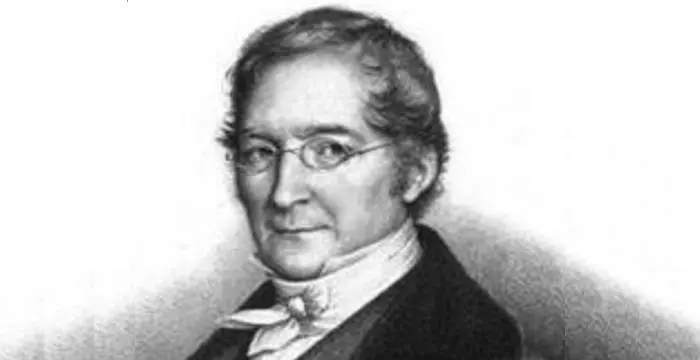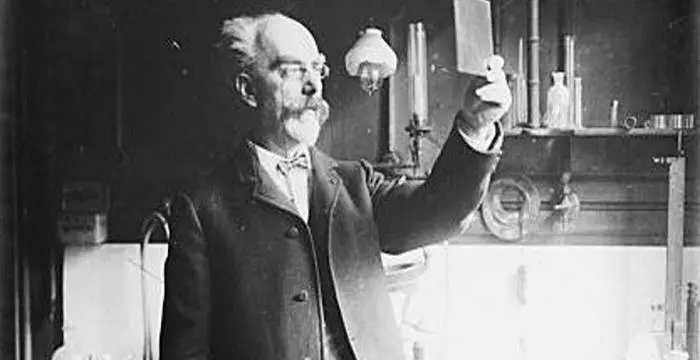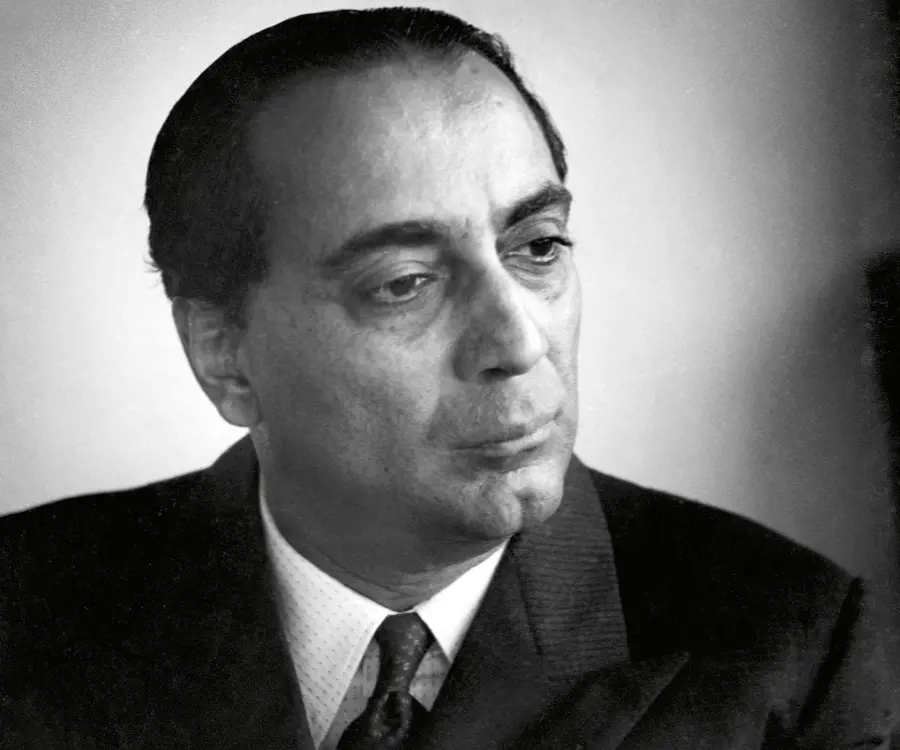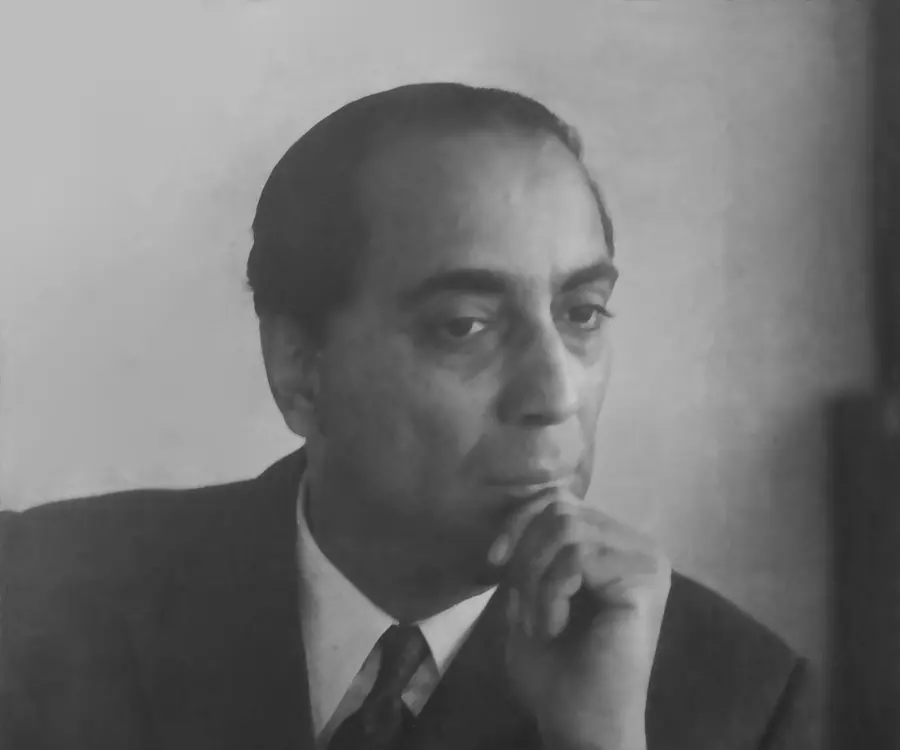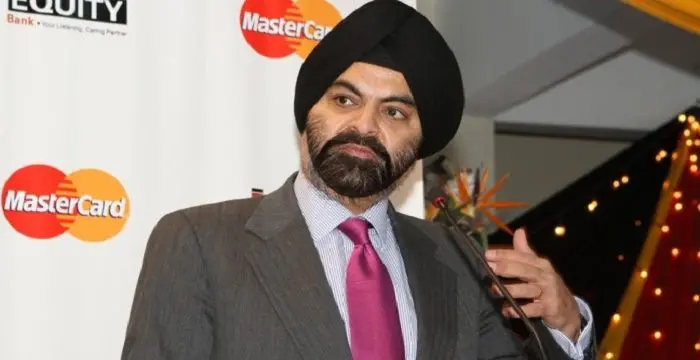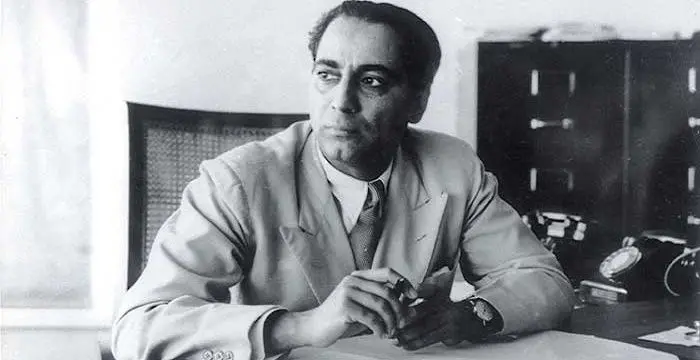
Homi Bhabha - Physicists, Career and Personal Life
Homi Bhabha's Personal Details
Homi Bhabha was the father of Indian nuclear programme
| Information | Detail |
|---|---|
| Birthday | October 30, 1909 |
| Died on | January 24, 1966 |
| Nationality | Indian |
| Famous | Scientists, Physicists, Physicists |
| Known as | Homi Jahangir Bhabha |
| Cause of death |
|
| Birth Place | Mumbai, India |
| Gender | Male |
| Father | Jehangir Hormusji Bhabha |
| Mother | Meheren |
| Sun Sign | Scorpio |
| Born in | Mumbai, India |
| Famous as | Indian physicist |
| Died at Age | 56 |
// Famous Physicists
Walter Kohn
Nobel Laureate Walter Kohn was an Austrian-born American theoretical chemist and physicist. Check out this biography to know about his childhood, life, achievements, works & timeline.
Amedeo Avogadro
Amedeo Avogadro was an Italian scientist who formulated what is now known as Avogadro's law. This biography of Amedeo Avogadro provides detailed information about his childhood, life, achievements, works & timeline.
Gabriel Lippmann
Gabriel Lippmann was a French physicist and inventor. He was awarded the Nobel Prize in Physics in 1908. This biography of Lippmann provides detailed information about his childhood, life, research, achievements and timeline.
Homi Bhabha's photo
Who is Homi Bhabha?
The man who pioneered the Indian nuclear research programme, Homi Jahangir Bhabha was a nuclear physicist who laid the foundation for nuclear research in India. Often hailed as the “father of Indian nuclear programme’, Bhabha was not only a scientist, but also a visionary and an institution builder. From childhood, he was an intelligent and hard working student and his parents dreamed of him becoming a mechanical engineer. However, young Bhabha’s interest laid in studying physics and not in becoming an engineer. Yet he honored his parents’ wish and completed his degree in mechanical engineering. His parents too respected their son’s true interest and supported him in his pursuit of scientific research. Bhabha studied in Europe where he became acquainted with many great physicists of his time, and was determined to contribute to India’s scientific research upon his return. He had very ambitious plans and upon returning to his home country, he set about establishing the Cosmic Ray Research Unit. He helped to formulate India’s strategy in the field of nuclear power for which he is fondly remembered as the father of Indian nuclear power. The great scientist’s brilliant career was cut short by a plane crash which claimed his life.
// Famous Scientists
Juliane Koepcke
Juliane Koepcke is a German-Peruvian biologist, who was the lone survivor among the 92 passengers and crew of the ill-fated LANSA Flight 508 that crashed in the Peruvian rainforest on 24 December 1971. Know more about her life in this biography.
Henry Cavendish
Henry Cavendish was a theoretical chemist and physicist, renowned for discovery of hydrogen and calculation of the mass of earth. To know more about his childhood, profile, timeline and career read on
Konstantin Tsiolkovsky
Konstantin Tsiolkovsky was a Russian rocket scientist and a pioneer of astronautics. This biography provides detailed information about his childhood, family, personal life, career, achievements, etc.
Childhood & Early Life
He was born into the home of a well known Parsi lawyer Jehangir Hormusji Bhabha and his wife Meheren. His family was very wealthy and prominent, and he was related to Dorabji Tata.
After receiving his primary education at Bombay’s Cathedral and John Connon School, he went to Elphinstone College. Then he studied at the Royal Institute of Science till 1927.
His parents and uncle Dorab Tata wanted the brilliant young Homi to study mechanical engineering from Cambridge University so that he could join Tata Steel Mills upon his return to India.
Homi went to Cambridge University where he began studying mechanical engineering. But he realized that his true calling wasn’t engineering but the pursuit of science. He told his parents of this issue.
His father, a considerate person, promised to finance Homi’s further studies in science provided he completed his mechanical engineering in first class. He passed the mechanical engineering exam in 1930 with first class.
Keeping up with his promise, his father let him continue his studies. Homi studied mathematics under Paul Dirac and later worked towards his doctorate in theoretical physics.
In 1933, he received his doctorate in nuclear physics and published his first scientific paper, ‘The Absorption of Cosmic radiation’ which helped him win the Isaac Newton Studentship in 1934 which he held for the next three years.
During the 1930s, nuclear physics was an emerging field that often set off hot debates in the scientific community. Several breakthroughs were taking place in this field and Homi Bhabha was deeply drawn to research in this field.
Career
During his studentship, he also worked with Niels Bohr in Copenhagen along with his research work at Cambridge. He published a paper in the ‘Proceedings of the Royal Society, Series A’, in 1935 in which he gave the calculation to determine the cross section of electron-positron scattering.
Along with Niels Bohr he published a paper, ‘The Passage of Fast Electrons and the Theory of Cosmic Showers’ in 1936 in which they described how primary cosmic rays from outer space interact with the upper atmosphere.
For his work Bhabha was awarded the Senior Studentship in 1937 which helped him continue his work at Cambridge. In 1939 he went to India for a brief vacation when the World War II broke out and this prevented him from returning to Cambridge.
He accepted a position in the Indian Institute of Science, Bangalore, as a Reader in the Department of Physics which was then headed by the eminent physicist, C.V.Raman.
In 1944, Bhabha felt that India needed laboratories and facilities to conduct research in nuclear science. Thus he decided to solicit the support of the visionary and industrialist, Dorabji Jamsetji Tata
The Tata Trust accepted his proposal and the Tata Institute of Fundamental Research was established in 1945 in Bombay which had the facilities for conducting large scale research in physics, chemistry, electronics and mathematics.
He also played a key role in the formation of Atomic Energy Commission in 1948 and the Department of Atomic Energy in 1954. A visionary, he had realized the importance of nuclear research programme way back in the 1940s when India was still under British rule!
He envisioned a three stage nuclear programme consisting of utilization of natural uranium, thorium and plutonium in advanced nuclear reactors with closed full circle. Because of this, he was called the father of India’s nuclear power programme.
Major Works
Hailed as the father of India’s nuclear power programme, Homi Bhabha was a visionary who foresaw the need for high quality facilities in the country to conduct research on nuclear power. He envisioned the three stage nuclear power programme which focused on extracting power from thorium instead of uranium reserves.
Awards & Achievements
In 1954, he was honored with the Padma Bhushan, the third highest civilian award in India, for his invaluable contributions to science and engineering.
Personal Life & Legacy
Homi Bhabha was a bachelor, a man who fully devoted his life to science. He was also a painter who loved classical music and opera.
He was abroad the Air India Flight 101 which crashed near Mont Blanc in the Alps on 24 January, 1966. He died in that plane crash.
// Famous Physicists
Henry Cavendish
Henry Cavendish was a theoretical chemist and physicist, renowned for discovery of hydrogen and calculation of the mass of earth. To know more about his childhood, profile, timeline and career read on
Walter Kohn
Nobel Laureate Walter Kohn was an Austrian-born American theoretical chemist and physicist. Check out this biography to know about his childhood, life, achievements, works & timeline.
Nikola Tesla
Nikola Tesla was a Serbian-American inventor, best known for his development of alternating current electrical systems. This biography of Nikola Tesla provides detailed information about his childhood, life, achievements, works & timeline.
Homi Bhabha's awards
| Year | Name | Award |
|---|---|---|
Other | ||
| 0 | Adams Prize (1942) | |
| 0 | Padma Bhushan (1954) | |
Homi Bhabha biography timelines
- // 30th Oct 1909He was born into the home of a well known Parsi lawyer Jehangir Hormusji Bhabha and his wife Meheren. His family was very wealthy and prominent, and he was related to Dorabji Tata.
- // 1927After receiving his primary education at Bombay’s Cathedral and John Connon School, he went to Elphinstone College. Then he studied at the Royal Institute of Science till 1927.
- // 1930His father, a considerate person, promised to finance Homi’s further studies in science provided he completed his mechanical engineering in first class. He passed the mechanical engineering exam in 1930 with first class.
- // 1933In 1933, he received his doctorate in nuclear physics and published his first scientific paper, ‘The Absorption of Cosmic radiation’ which helped him win the Isaac Newton Studentship in 1934 which he held for the next three years.
- // 1935During his studentship, he also worked with Niels Bohr in Copenhagen along with his research work at Cambridge. He published a paper in the ‘Proceedings of the Royal Society, Series A’, in 1935 in which he gave the calculation to determine the cross section of electron-positron scattering.
- // 1936Along with Niels Bohr he published a paper, ‘The Passage of Fast Electrons and the Theory of Cosmic Showers’ in 1936 in which they described how primary cosmic rays from outer space interact with the upper atmosphere.
- // 1939For his work Bhabha was awarded the Senior Studentship in 1937 which helped him continue his work at Cambridge. In 1939 he went to India for a brief vacation when the World War II broke out and this prevented him from returning to Cambridge.
- // 1944In 1944, Bhabha felt that India needed laboratories and facilities to conduct research in nuclear science. Thus he decided to solicit the support of the visionary and industrialist, Dorabji Jamsetji Tata
- // 1945The Tata Trust accepted his proposal and the Tata Institute of Fundamental Research was established in 1945 in Bombay which had the facilities for conducting large scale research in physics, chemistry, electronics and mathematics.
- // 1954He also played a key role in the formation of Atomic Energy Commission in 1948 and the Department of Atomic Energy in 1954. A visionary, he had realized the importance of nuclear research programme way back in the 1940s when India was still under British rule!
- // 1954In 1954, he was honored with the Padma Bhushan, the third highest civilian award in India, for his invaluable contributions to science and engineering.
- // 24th Jan 1966He was abroad the Air India Flight 101 which crashed near Mont Blanc in the Alps on 24 January, 1966. He died in that plane crash.
// Famous Indian peoples
Sunny Leone
Sunny Leone is an actress and model. Check out this biography to know about her birthday, childhood, family life, achievements and fun facts about her.
Swami Vivekananda
Swami Vivekananda was the chief disciple of Sri Ramakrishna, and was responsible for awakening India spiritually. Check this biography to know in detail about his life, profile and timeline.
Ajaypal Banga
Ajaypal Banga is an Indian-American business executive who is the CEO of MasterCard. Check out this biography to know about his childhood, family life, achievements and fun facts about him.
Ruskin Bond
Ruskin Bond is an award winning Indian author of British descent. This biography of Ruskin Bond provides detailed information about his childhood, life, achievements, works & timeline.
Urmila Matondkar
Urmila Matondkar is an Indian film actress known for her films like ‘Rangeela’ and ‘Satya.’ Check out this biography to know about her childhood, family life, achievements and fun facts about her.
Ashoka
Ashoka was the third emperor of the Mauryan Dynasty and ruled almost the entire Indian subcontinent. This biography profiles his childhood, life, reign, achievements and timeline
Homi Bhabha's FAQ
What is Homi Bhabha birthday?
Homi Bhabha was born at 1909-10-30
When was Homi Bhabha died?
Homi Bhabha was died at 1966-01-24
Which age was Homi Bhabha died?
Homi Bhabha was died at age 56
Where is Homi Bhabha's birth place?
Homi Bhabha was born in Mumbai, India
What is Homi Bhabha nationalities?
Homi Bhabha's nationalities is Indian
What is Homi Bhabha's cause of dead?
Homi Bhabha dead because of Plane Crash
Who is Homi Bhabha's father?
Homi Bhabha's father is Jehangir Hormusji Bhabha
Who is Homi Bhabha's mother?
Homi Bhabha's mother is Meheren
What is Homi Bhabha's sun sign?
Homi Bhabha is Scorpio
How famous is Homi Bhabha?
Homi Bhabha is famouse as Indian physicist

